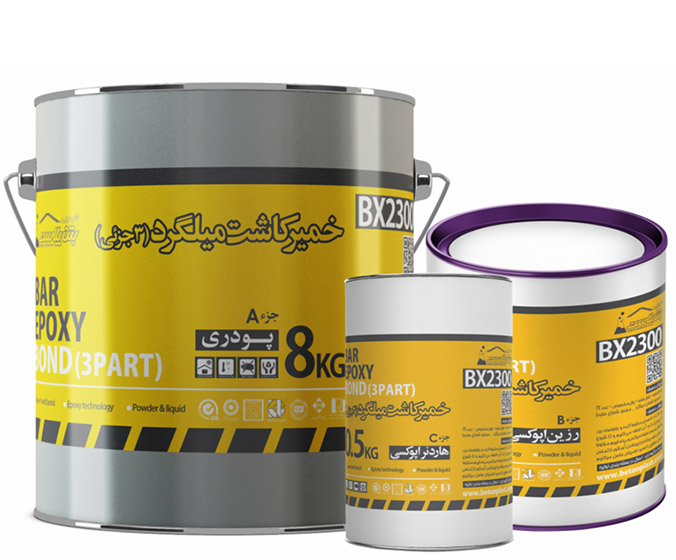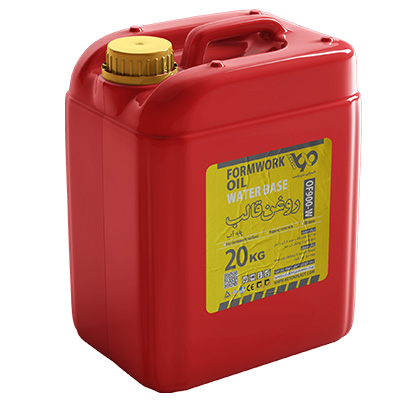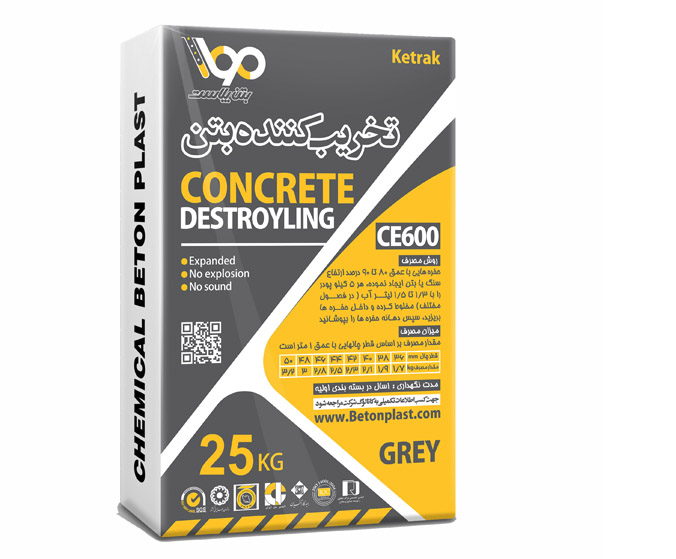Rebar Epoxy Bond
- No shrinkage or shrinkage after curing
- High resistance to vibrations and structural stresses
- Increases structural strength
- High mechanical strength
Description
Rebar Epoxy Bond
Reinforcement of concrete structures is a vital issue in structural engineering. Reinforcement refers to the use of materials or products that can increase the load-bearing capacity of a concrete structure. This process includes a set of measures aimed at restoring and increasing the load-bearing capacity of structural systems. Typically, reinforcement of concrete structures is carried out by increasing the dimensions of concrete sections or by strengthening them by attaching external reinforced concrete elements such as Rebar Epoxy Bond to the existing structure.
The reinforcement process often begins with the installation of chemical anchors, which, according to specific steps, are embedded into the concrete structure. To do this, a hole is usually drilled in the concrete surface, and then the anchors or reinforcement bars are fixed inside the holes using specialized adhesives or mortars. The adhesives and mortars used for this connection must have high resistance to tensile and mechanical forces. For this reason, epoxy resin-based rebar adhesives are commonly used.
The three-component rebar adhesive is a specialized product used for reinforcing concrete structures by embedding anchor bolts instead of chemical methods. This adhesive is specifically designed for rebar installation on horizontal surfaces. The three-component rebar bonding paste is formulated and produced based on epoxy resins and is used in reinforcement projects to stabilize rebar in concrete floors. Additionally, the rebar adhesive is effective for surfaces that require the installation of heavy and vibrating components, as it has high compressive, bending, and tensile strength.
More products ; Other products
The three-component rebar bonding paste is known as a specialized adhesive in construction for securing rebars or bolts in concrete structures. The process starts with drilling the concrete surface to create the necessary holes for installing rebars or bolts. Furthermore, the diameter and depth of these holes must comply with the building plans. Generally, the ratio of depth to width of the hole determines the space required for the adhesive to flow around the anchor. The prominent walls of the rebars or bolts prevent excessive flow of adhesive into the lower layers. This bonding paste helps increase the strength and overall stability of the concrete structure, ensuring long-term performance and safety.
features and effects Rebar Epoxy Bond
- Longer lifespan than concrete structures
- Excellent adhesion to concrete and steel
- High chemical, tensile, and flexural resistance
- Self-compacting property
- No water absorption
- Excellent tensile and compressive strength in the early stages
- Resistant to seawater and wastewater
- Good resistance to petroleum products
- No shrinkage or contraction after curing
- High resistance to vibrations and structural stresses
- Increases overall structural strength
- High mechanical resistance
- Good resistance to temperature, humidity, and chemicals
- Provides a protective layer for rebar
Applications Rebar Epoxy Bond
- Installation and stabilization of metallic, concrete, stone, and other similar materials
- Installation of bridge column plates
- Repairing concrete structures, bridges, and roads
- Installation and stabilization of crane rails
- Installation and stabilization of railway tracks
- Rebar and anchor bolt anchoring in concrete or stone
- Rebar anchoring in concrete floors
- Installation of material and equipment transfer rails
Usage Instructions
Before using the rebar grouting, ensure that the surfaces to be treated are free from moisture, grease, dust, rust, and any weak or unstable particles. If the surfaces are contaminated, they should be cleaned using air pressure, sandblasting, or wire brushes. If the rebar or anchor bolts are rusty, rust removal must be performed using rust removers or wire brushes and sandblasting to ensure better adhesion. Next, select an appropriate container to mix the three components of the grouting.
First, combine the liquid components of the adhesive (resin and hardener) using an electric mixer for 3 to 4 minutes until thoroughly mixed. Then, add the powder component and continue mixing until a uniform and homogeneous mixture is achieved. Note that the prepared grout should be used within 20 minutes after mixing.
For rebar installation, pour the prepared grout into the hole up to 70% of its volume. Then, place the rebar into the hole and perform rotational movements to ensure proper bonding of the rebar grout with the surfaces.
Physical and Chemical Properties Table
| Property | A (Liquid) – B (Liquid) – C (Powder) |
| State | Liquid – Liquid – Powder |
| Color | Milky – Clear White – Gray |
| Specific Gravity | 2.2 gr/cm³ |
| Standard | ASTM C887 |
| Maximum Working Time After Mixing | 20 minutes |
| 1-Day Compressive Strength | 55 MPa |
| 7-Day Compressive Strength | 80 MPa |
| Tensile Strength | 23 MPa |
| Adhesion to Concrete | 14 MPa |
| Time to Reach Final Strength | 7 days |
Packaging
10kg set




Reviews
There are no reviews yet.